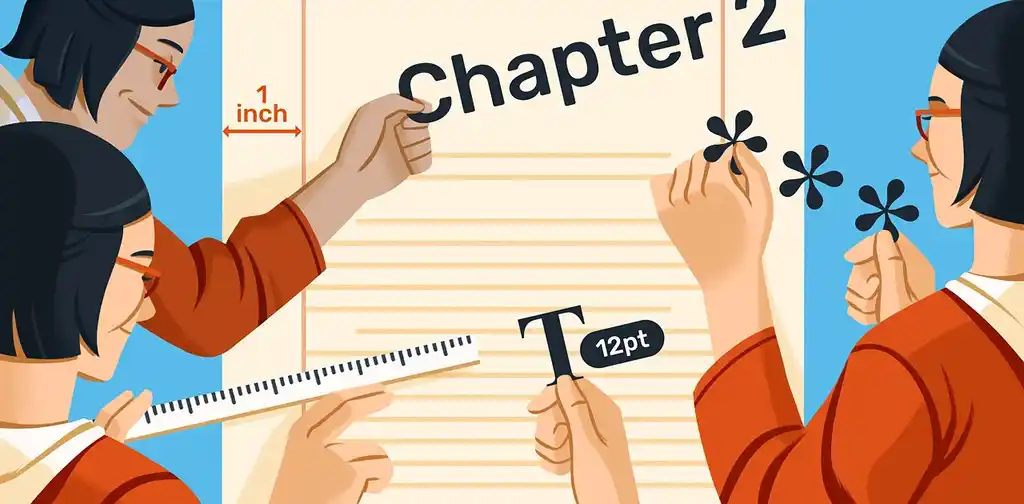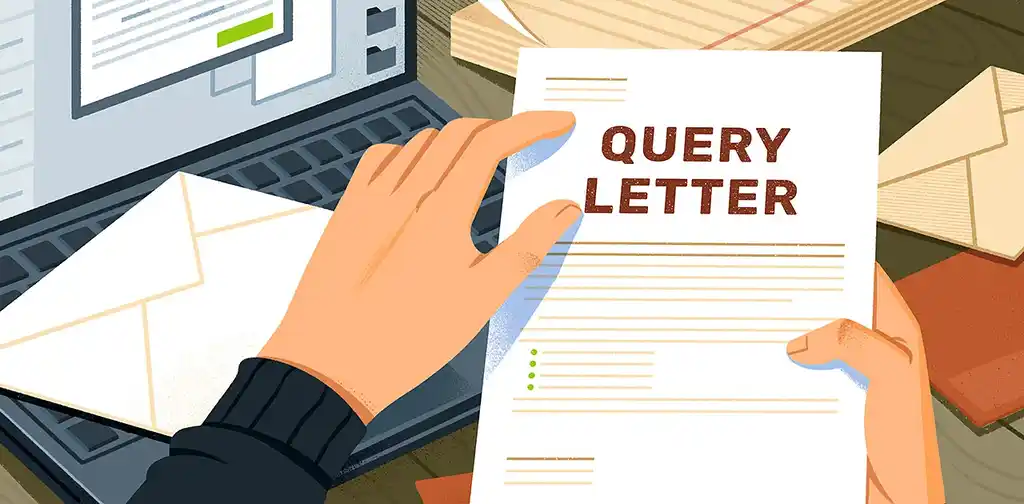Blog • Understanding Publishing
Last updated on Oct 17, 2025
How to Write an Incredible Synopsis in 4 Simple Steps
Savannah Cordova
Savannah is a senior editor with Reedsy and a published writer whose work has appeared on Slate, Kirkus, and BookTrib. Her short fiction has appeared in the Owl Canyon Press anthology, "No Bars and a Dead Battery".
View profile →Your novel is fully written, edited, and polished to perfection — you’re ready to pitch it to agents! But you’re missing a critical piece of persuasion: the synopsis. Even after putting together your entire book, you may have no idea how to write one, or even how to approach it.
Luckily, we’ve got answers for you. Read on for our best tips on writing a synopsis that’s clear, concise, captivating… and may even lead to an all-out agent battle over your novel!
What is a synopsis?
Before we look at the steps in more detail, let's clarify what a synopsis is: a concise summary of a book designed to give the reader a clear overview of the overall narrative. Although these kinds of summaries also appear on the pages of school book reports and Wikipedia, this guide will focus on constructing one that you can send out to agents (and eventually publishers).
Your novel synopsis should achieve two things: firstly, it should convey the contents of your book, and secondly, it should be intriguing!
While you don’t need to pull out all the marketing stops at this stage, you should have a brief hook at the beginning and a sense of urgency underlying the text that will keep your reader going. It should make potential agents want to devour your whole manuscript — even though they’ll already know what happens.
While writing your synopsis, make sure that it includes:
- A complete story arc
- Your own voice and unique elements of your story
- The ending or resolution (unlike in a blurb)
As for the ideal length for this piece, it varies from project to project. Some authors recommend keeping it to 500 words, while others might write thousands. However, the standard range is about one to two single-spaced pages (or two to five double-spaced pages). And if you're interested in knowing how to format the whole of your manuscript for submission, we recommend downloading this manuscript format template.

FREE RESOURCE
Manuscript Format Template
Get your manuscript ready for submission to agents and publishers.
You may also want to have an additional “brief” summary prepared for agents who specifically request a single page or less. Remember: as hard as it will be to distill all your hard work into that minimal space, it’s crucial to keep your synopsis digestible and agent-friendly.
Different authors have different perspectives on synopses. Legendary sci-fi and fantasy author Tanith Lee wasn't so keen on them:
“I hardly ever work from a synopsis -- I find they act like chains.”
That's just one perspective, however! Jo Nesbø takes the opposite approach to his writing:
“Normally I start with a plot, and write a synopsis, and the ideas come from the construction.”
There's no right or wrong way write a synopsis. But if you're struggling to get started, here's a simple 4 step method you can use. Let's get into it!
How to write a novel synopsis in 4 steps
1. Get the basics down first
When it comes to writing a synopsis, substance is the name of the game. No matter how nicely you dress it up, an agent will disregard any piece that doesn’t demonstrate a fully fleshed out plot and strong narrative arc. So it stands to reason that as you begin writing, you should focus on the fundamentals.
Start with major plot points
Naturally, you want agents to be aware of your story's plot. So the best way to start summarizing your story is to create a list of those plot points, including:
- The inciting incident — what sparks the central conflict of your story?
- The events of the rising action — what happens in the interlude between the inciting incident and the climax, and how does this build tension?
- The height of the action, or climax, of your story — this one is the most important, as it should be the most exciting part of your book!
- The resolution or ending — again, unlike a blurb, a synopsis doesn’t need to dangle the carrot of an unknown ending to the reader; you can and should reveal your story’s ending here, as this brings the plot and narrative arc to a close.
Listing these points effectively maps out the action and arc of your story, which will enable the reader to easily follow it from beginning to end.
Include character motivations
The key here is not to get too deep into characterization, since you don’t have much room to elaborate. Instead, simply emphasize character goals and motivations at the beginning and end of your synopsis — first as justification for the inciting incident, then again to bring home the resolution. For example:
Beginning: “Sally has spent the past twenty years wondering who her birth parents are [motivation]. When a mysterious man offers her the chance to find them, she spontaneously buys a ticket to Florence to begin her journey [inciting action].”
Ending: “She returns to the US with the man who was her father all along [resolution], safe in the knowledge that she’ll never have to wonder about him again [restated motivation].”
Also note how the text here is written in third person, present tense, as it should be regardless of the tense or POV of your actual book. Writing a synopsis in first or second person doesn’t really work because it’s not meant to be narrated — just summarized. Basically, the present tense works to engage the reader while the third person allows the story to be told smoothly.

FREE RESOURCE
Query Submissions Tracker
Stay organized on your journey to find the right agent or publisher.
2. Highlight what’s unique
Now it’s time to spice up your synopsis by highlighting the elements that make it unique. Agents need to know what’s so special about your book in particular — and moreover, is it special enough to get readers to pick it up? Below are some features you might employ to grab an agent’s attention and assure them of your book’s appeal.
Voice
Your writing voice is an essential tool here: it conveys your novel’s tone and is one of the most important factors in making your work stand out. However, it’s also one of the most difficult elements to evoke in such a small amount of space.
The best way to capture voice in a synopsis is through extremely deliberate word choice and sentence structure. So if you were Jane Austen, you’d use clever words to magnify your wit: “When Darcy proposes to her apropos of nothing, Elizabeth has the quite understandable reaction of rejecting him.” You may not be able to use all the elaborate prose of your novel, but your synopsis should still reflect its overall feeling.
Plot twists
Even though they’re one of the oldest tricks in the book, readers will never tire of juicy plot twists. If your novel contains one or more of these twists, especially at the climax, make sure your synopsis accentuates it. But don’t hint too much at the twist, as this will make it seem more dramatic when it comes; a couple of words in the intro will suffice as foreshadowing.
For instance, if you were writing a summary of Gone Girl, you might open with “Nick Dunne wakes up one morning to find that his wife, Amy, has apparently disappeared.” This implies that she may not be as “gone” as we think she is, setting the stage for the later reveal.

Point of view
Another aspect that might set your book apart is a distinctive point of view. Since you’ll be giving your synopsis in third person, you can limit this inclusion to an introductory sentence: “This book is narrated from the point of view of a mouse.”
Although this strategy works best for books with a highly unusual point of view (such as The Book Thief by Markus Zusak, in which the story is told by Death), it can also be very helpful to remember for seemingly bog-standard narrators. If one of your characters narrates in first person, make sure to address their individual narrative quirks as well as any biases or limitations; highlighting a narrator who's not the most reliable can really add to your novel’s intrigue!
3. Edit for clarity and excess
Don’t shroud your synopsis in mystery; this is very frustrating to agents who just want to know what happens in your book! With that in mind, after you’ve written the bulk of your summary, it’s time to edit for clarity. You also may have to delete some text, so you can get it right in that couple-page sweet spot.
Editing for clarity
The paramount rule of synopses is a real doozy: tell, don’t show. It’s the opposite of that classic adage that writers have heard their whole lives, and it’s exactly what you need to write a successful synopsis.
As you return to what you’ve written, scan for sentences that are vague or unclear, especially toward the beginning. Many writers fall into the trap of trying to hook agents by opening with a sentence akin to the first murky line of a literary novel. Again, though you do want your intro to be intriguing, it has to cut to the chase pretty quickly.
When it comes to opening a synopsis, you need to think like Tolkien, not Tolstoy. “In a hole in the ground there lived a hobbit.” Crisp, clear, and to the point: one of the very few times you should tell, rather than show.
Editing excess words
If your synopsis is longer than a couple of pages at this point, you need make some serious cutbacks. Read through what you have, scrutinizing every sentence and word, even if you think you’ve chosen them carefully. Reduce any run-on sentences or subordinate clauses that unnecessarily lengthen your piece.
Finally, eliminate irrelevant details — anything that doesn’t lead to the next plot point or directly contribute to your voice or other distinctive elements. It’s unlikely you’ll have included any of these in the first place, but just in case they’ve slipped through, cut them. Save the frills for your book; remember, your synopsis is all about substance.
4. Make sure it flows
By the time it’s finished, your synopsis should read like a summary from an excellent book review — or at the very least SparkNotes or Shmoop. This means not only clearly and concisely hitting every important point, but also reading in a smooth manner, placing just the right amount of emphasis on the critical moments and unique aspects we’ve discussed.
Get test readers
A great way to ensure that your synopsis is paced precisely and flows well is to give it to test readers, either someone you know or a professional editor. You’ve spent way too much time with these words to be objective about them, so pay attention to what other people suggest: possible word substitutions, transitions, and which details to emphasize versus delete.
Use professional synopses as models
You don’t want to look at examples of other synopses too soon, otherwise yours will come out sounding formulaic and stale. That said, professional synopses can be a very valuable tool for refining toward the end of the process! Compare and contrast them to the synopsis you’ve written, and adapt any techniques or turns of phrase you feel would enhance it.
Here’s an example of a strong (albeit brief) synopsis of Great Expectations by Charles Dickens, courtesy of the Oxford Companion to English Literature:
Phillip Pirrip, more commonly known as “Pip,” has been brought up by his tyrannical sister, wife of the gentle Joe Gargery. He is introduced to the house of Miss Havisham who, half-crazed by the desertion of her lover on her bridal night, has brought up the girl Estella to use her beauty as a means of torturing men. Pip falls in love with Estella and aspires to become a gentleman.
Money and expectations of more wealth come to him from a mysterious source, which he believes to be Miss Havisham. He goes to London, and in his new mode of life meanly abandons the devoted Joe Gargery, a humble connection of whom he is now ashamed.
Misfortunes come upon him. His benefactor proves to be an escaped convict, Abel Magwich, whom he as a boy had helped. Pip’s great expectations fade away and he is penniless. Estella meanwhile marries his sulky enemy Bentley Drummle, by whom she is cruelly ill treated.
In the end, taught by adversity, Pip returns to Joe Gargery and honest labor. He and Estella, who has also learnt her lesson, are finally reunited.

This synopsis works well because it includes:
- The inciting incident (Pip moving in with Miss Havisham), the rising action (him being in London), the climax (returning to Joe Gargery), and the resolution (reuniting with Estella)
- Character motivations (Miss Havisham wants to punish all men because her fiancé betrayed her; Pip wants to become a gentleman so Estella will fall in love with him)
- A plot twist (Pip’s benefactor being a criminal — whom he knows from his childhood!)
- Distinctive voice (formal yet engaging, doesn’t detract from the plot) and smoothly written style (events are chronological and progress quickly)
Your synopsis is one of the biggest deciding factors in whether an agent wants to see more from you or not. No matter how chipper your query letter, the bottom line is that this summary tells agents (and later publishers) what they really need to know: what your book is about, what makes it unique, and most importantly, if they can sell it.

FREE COURSE
How to Write a Query Letter
Learn to grab agents’ attention with 10 five-minute lessons.
That’s why it’s vital that you make your synopsis airtight. Fortunately, if you’ve followed these steps, yours will be chock full of plot details with a touch of your own special writing sauce: a synopsis that any agent (hopefully) won’t be able to resist.
Many thanks to Reedsy editors (and former agents) Sam Brody and Rachel Stout for consulting on this piece!
Do you have any tips for writing an irresistible synopsis? Leave them in the comments below!









2 responses
Elizabeth Westra says:
12/09/2018 – 22:10
This looks interesting, and I will read every word, but this would be different for a picture book. You only get one page to query for many children's books.
Dorothy Potter Snyder says:
14/10/2018 – 20:11
I am curious if anyone has ideas on how translators can write a synopsis for agents / publishers of works in translation? Might there be something about why this author is important in his/her country of origin and literary tradition? Which authors more known to English language readers might relate to this author (they've never heard of before)?